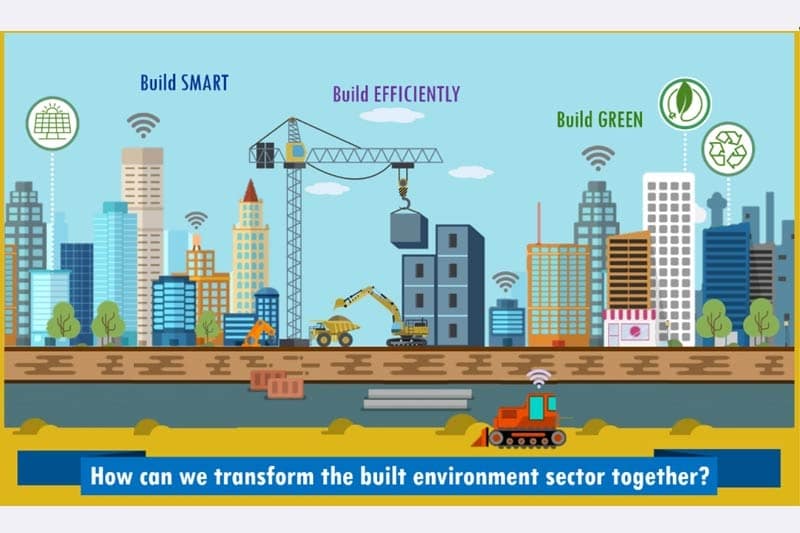Singapore’s Construction ITM aims to use cloud and digital technology to integrate stakeholders in the building life cycle
By 2025, the ITM targets to have 80,000 personnel trained in DfMA, IDD and green building capabilities

Integrated Digital Delivery (IDD)
Construction involves many parties at different stages of a project, and good coordination is critical in preventing unnecessary reworks along the way. IDD aims to strengthen coordination and foster collaboration by connecting all parties through digital information and technology.
IDD builds on top of BIM, or Building Information Modelling. It leverages cloud and digital technology to integrate stakeholders in the building life cycle management.
Several firms in different parts of the industry have started using tools like RFID tagging and data analytics to track and automate their project processes. Plans are underway to encourage adoption of shared platforms and standards to fully integrate the parties involved in building projects.
The Government has schemes to help firms level up on BIM and work through all the teething issues that they face. To drive the adoption of IDD, a masterplan is being developed by bringing the various parties and stakeholders together. As a start, shared platforms and standards will be developed to ensure IDD interoperability across the entire construction value chain.
Mr. Lee said in his speech, “We recognise that true integration of different systems will take time, but collectively, we will get there.”
Design for Manufacturing and Assembly
In terms of more effective and productive construction methods, the ITM focuses on Design for Manufacturing and Assembly (DfMA). DfMA involves transforming construction and making it more like a manufacturing and design process. Aspects of construction would be shifted from an open worksite into a controlled environment, such as a manufacturing plant, to prefabricate quality building components before bringing them onsite and assembling them. It means projects that can be completed faster, cleaner, quieter, and with better quality. The national target is to achieve 40% DfMA adoption by 2020. From fewer than 10 projects just 4 years ago, there are almost 40 projects in different stages of development using various types of technologies at the higher end of the DfMA continuum. To support this, the Government has three highly automated Integrated Construction and Prefabrication Hubs (ICPHs). Two more of these facilities are under construction, and there are plans for another five more of these.
Developing skills
The transformation of the sector will result in redesigned jobs involving higher skills, more competitive salaries and better work environment to meet the aspirations of Singaporeans.
For example, new roles such as production engineers and supervisors overseeing manufacturing of prefabricated concrete walls, and BIM managers have been introduced to the sector, and they work in a more conducive indoor work environment as compared to conventional construction work. The traditional worksite will also be transformed to become more streamlined, with lesser but more highly skilled workers needed to operate smarter machines and tools.
By 2025, the ITM targets to have 80,000 personnel trained in DfMA, IDD and green building capabilities. To support workforce needs and aspirations, a Built Environment SkillsFuture Tripartite (BEST) Taskforce has been set up to look at providing more structured internships, and lead in training more new graduates in response to industry feedback to help graduates become more job ready. There is a suite of scholarships and sponsorships available for in-service personnel to continue to improve.
Next steps
Mr. Lee said, “The construction ITM is a big step, but it is really a first step in our transformation journey for the entire Built Environment sector. We are also developing plans to transform the real estate, security, environmental services, and landscape sectors. Together, they make up the whole built environment. For instance, we are looking into how the Facilities Management (FM) industry can be further strengthened, and whether they can better leverage on IDD to use BIM models to better manage buildings and infrastructure throughout their life cycle.” “We are also seeing how facilities management and maintainability can be better integrated upfront at the building design stage, so we achieve a more efficient, green and sustainable city of the future,” he added.
The idea is to ultimately bring all these plans together horizontally to provide all-in-one integrated services for building projects.












